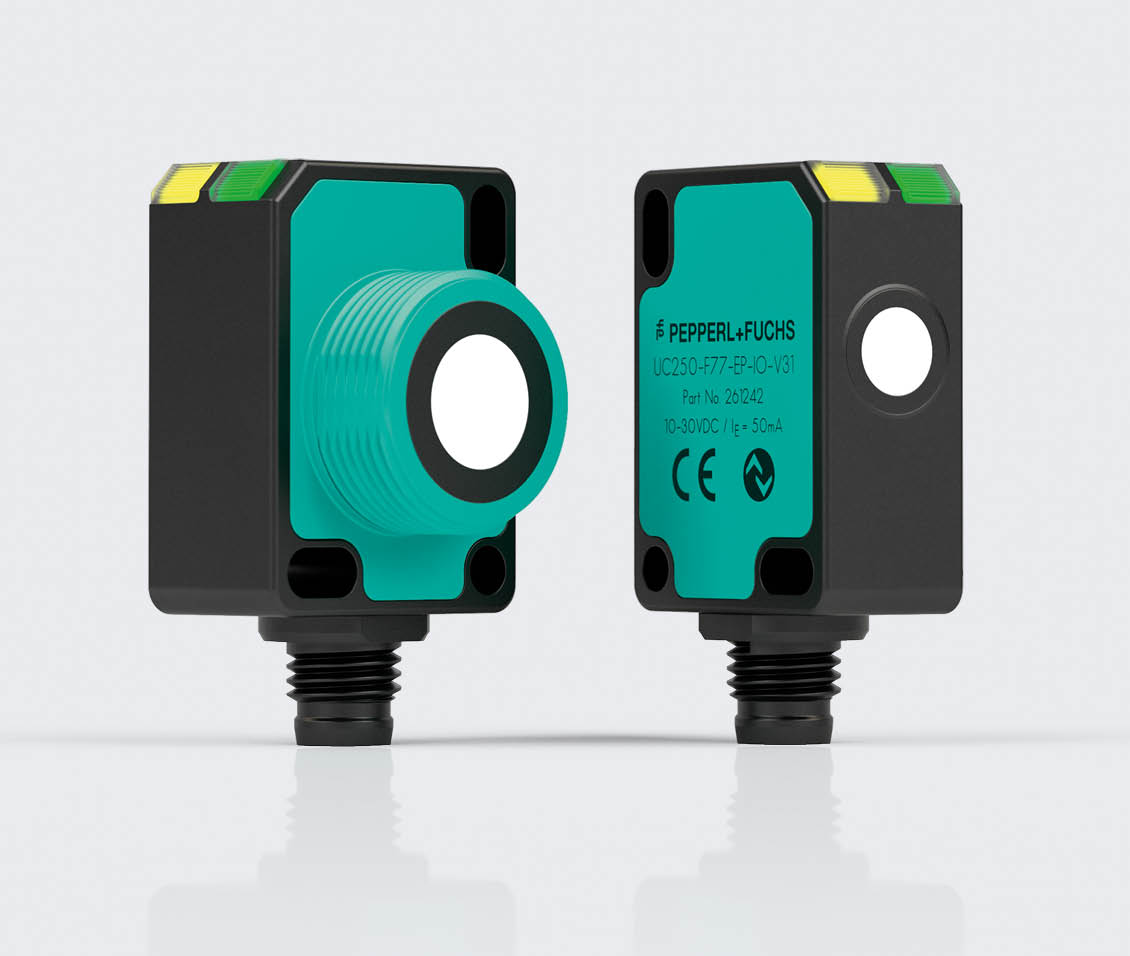November 28, 2017
Wrapped to Perfection
From melt-in-your-mouth to exotic—for all the varieties of chocolate in the world, there are just as many types of packaging. Regardless of the wrapper material's color or texture, UC-F77 series ultrasonic sensors monitor roll diameter and reliably detect breaks in material. These sensors help chocolate arrive on store shelves perfectly packaged.
Chocolate comes in countless flavors, filled with nuts, marzipan, nougat, liqueur—or with a hint of chili or ginger. Whether it is bittersweet, semisweet, milk, or white, the main ingredient is always cacao. The cacao content varies from 20 % cacao butter in white chocolate to more than 70 % pure cacao in dark chocolate. Chocolate is said to owe its modern name to the Aztec drink 'Xocóatl,' brewed as early as the 14th century by the native inhabitants of Latin America from a mix of water, cocoa, chili pepper, and vanilla.
From Latin America to the Wider World
The beans were brought to Europe by Spanish conquistadors in the 16th century, where they were used to create a bitter drink that soon became fashionable in aristocratic circles. It was not until the 19th century that cocoa became less important in the form of a drink. Around this time, Italian 'Cioccolatieri' began producing solid chocolate. This period saw the beginnings of the first chocolate manufacturers and brands that are still well-known today, such as Suchard, Sprüngli, Lindt, Tobler, and Nestle, who learned the art of chocolate making from the Italians.

The beans were brought to Europe by Spanish conquistadors in the 16th century, where they were used to create a bitter drink that soon became fashionable in aristocratic circles. It was not until the 19th century that cocoa became less important in the form of a drink. Around this time, Italian 'Cioccolatieri' began producing solid chocolate. This period saw the beginnings of the first chocolate manufacturers and brands that are still well-known today, such as Suchard, Sprüngli, Lindt, Tobler, and Nestle, who learned the art of chocolate making from the Italians.
Reliably Packaged
Before these treats of all shapes and sizes reach store shelves, they are packaged in wrappers, packets, or boxes. Whether the manufacturer requires cellophane, parchment paper, or colorful, shiny wrappers, the different materials required for processing are often supplied on rolls and fed into machines by guide rollers. Continuous material feed is essential so that the packaging process can proceed uninterrupted. Reliability and output are top priorities.
During the packaging of filled chocolates, trays of the product move along conveyors. The packaging materials required, such as foil or adhesive labels, are dispensed from rolls. The unrolling process for the packaging material—and the resulting reduction in roll diameter—is continuously monitored. This process requires precise detection of materials, regardless of their color and surface characteristics. Just like the chocolates themselves, the different types of packaging vary in color, surface, and composition. In addition, any breaks in the material must be detected during the feeding process.
Ultra-compact UC-F77 series ultrasonic sensors can tackle both of these challenges. They reliably detect even the most difficult materials—including transparent films, shiny packaging, and cardboard boxes. Since roll widths and diameters vary depending on the material, different sound beam widths are beneficial in ensuring precise detection. No problem for UC-F77 ultrasonic sensors: Their sound beam can be adjusted to the appropriate width. Even rolls that are just 5 cm wide can be monitored without the spool edge causing false trips. The narrow sound beam is also a key benefit for monitoring material break between the guide rollers. Any break in the packaging material is detected before chocolates are packaged incorrectly.
Synchronization and Maximum Transparency
Material rolls are often positioned closely together. This is where the UC-F77 series shines. Its compact design makes it perfect for retrofitting existing packaging machines, even in space-restricted applications. For added flexibility, the sensors are available as standard or sidelooker models. To prevent cross-talk between sensors, they can be synchronized in automatic multiplex mode. An integrated IO-Link interface enables communication from the control level to the sensor level, offering maximum transparency throughout the process. This ensures that perfectly wrapped treats keep making their way to store shelves and into the hands of chocolate lovers everywhere.



